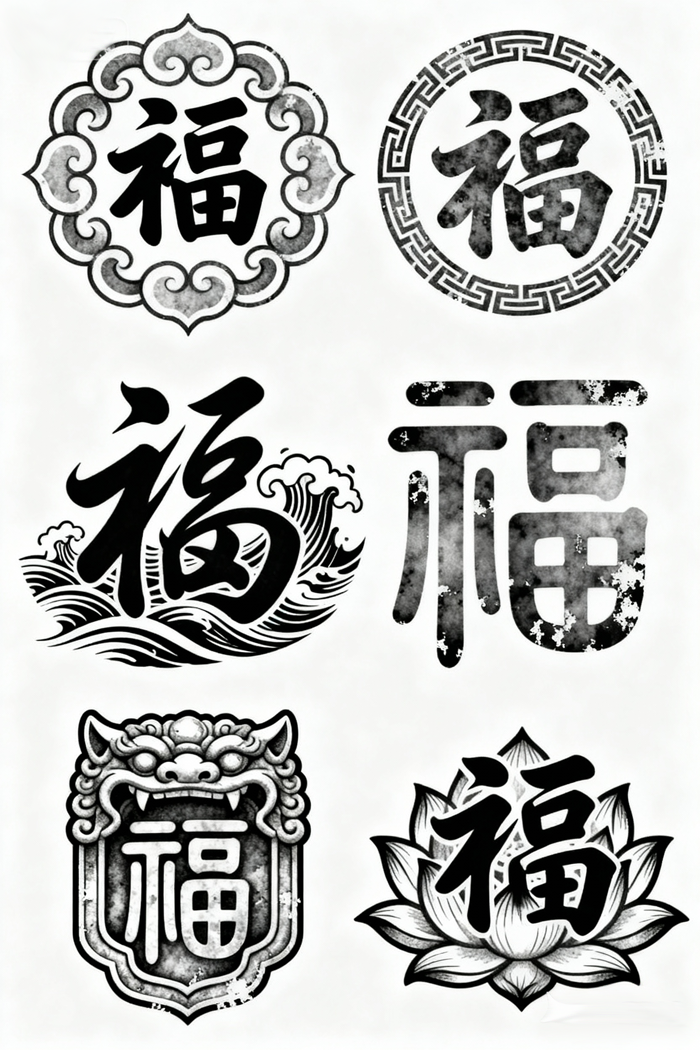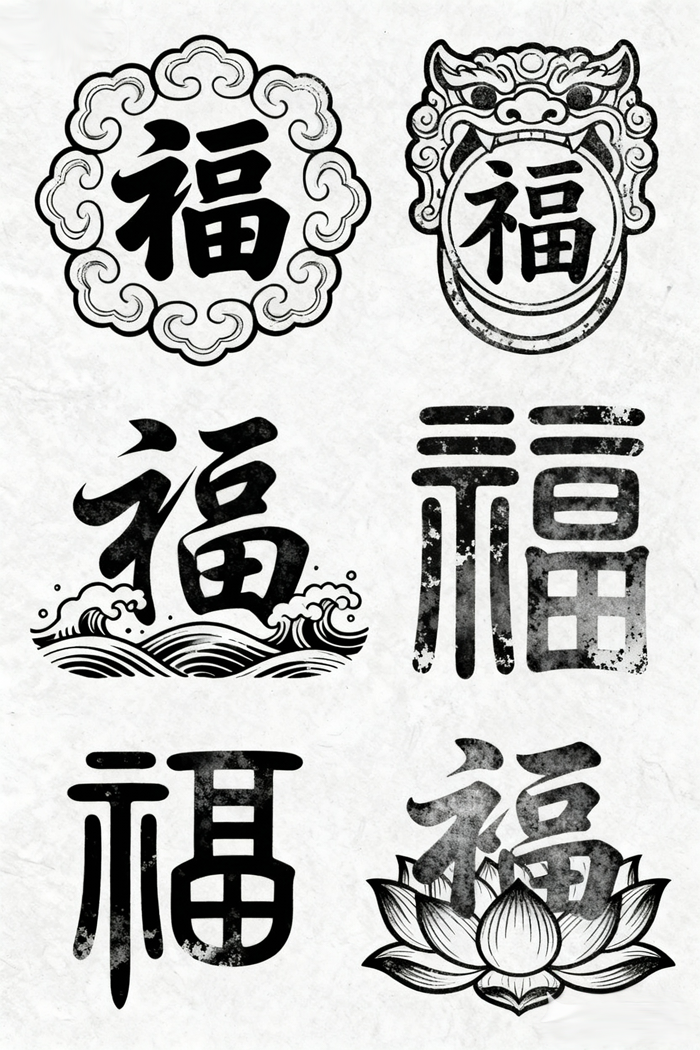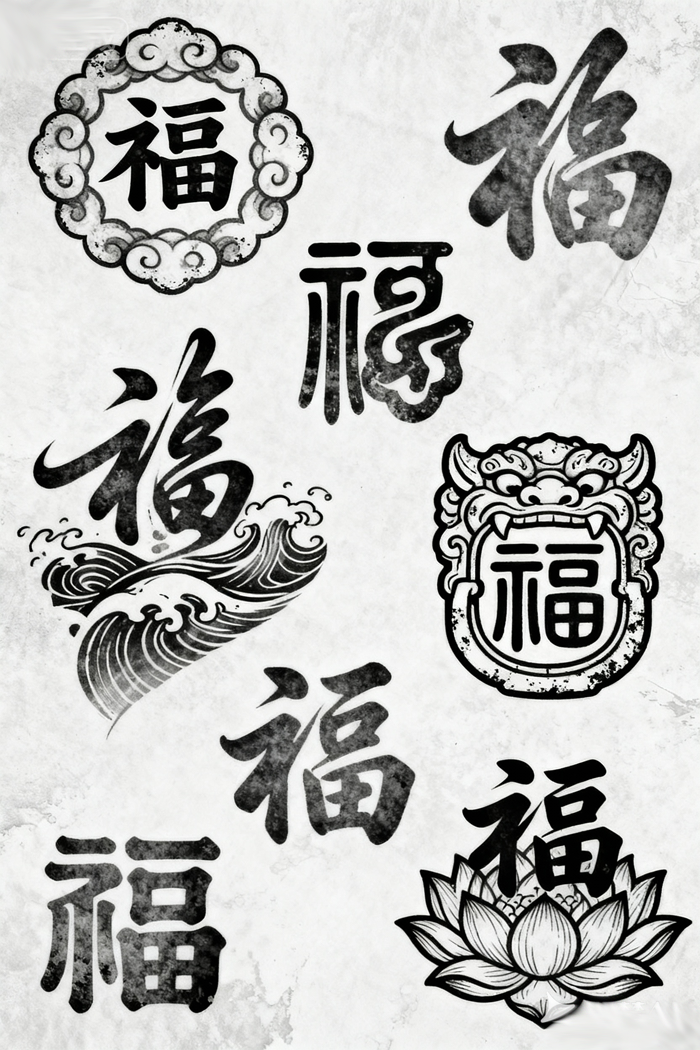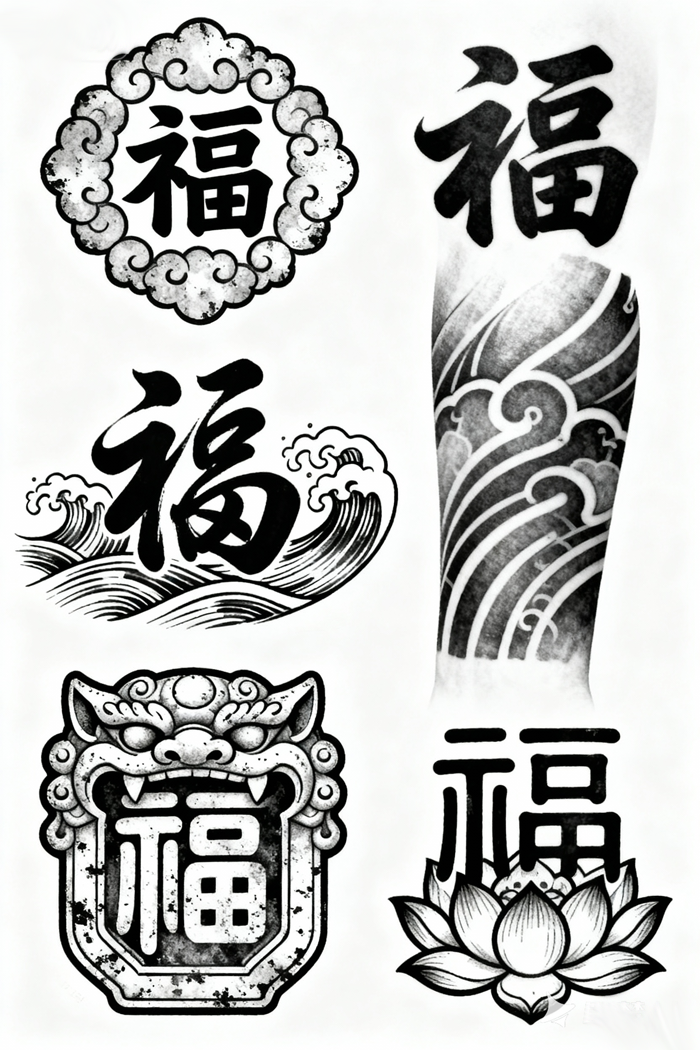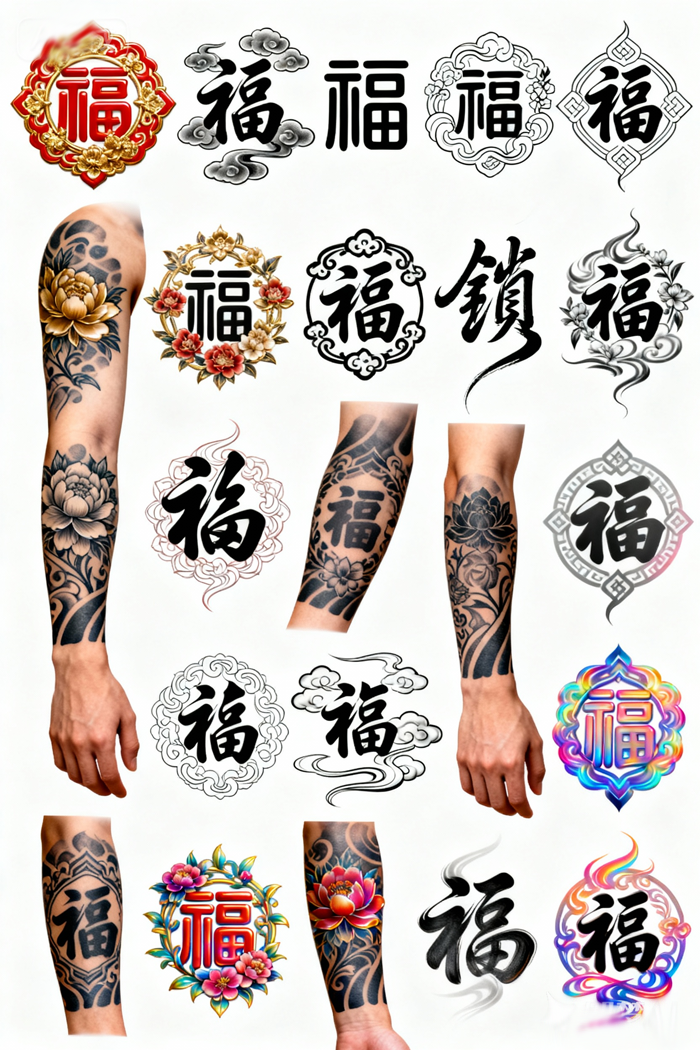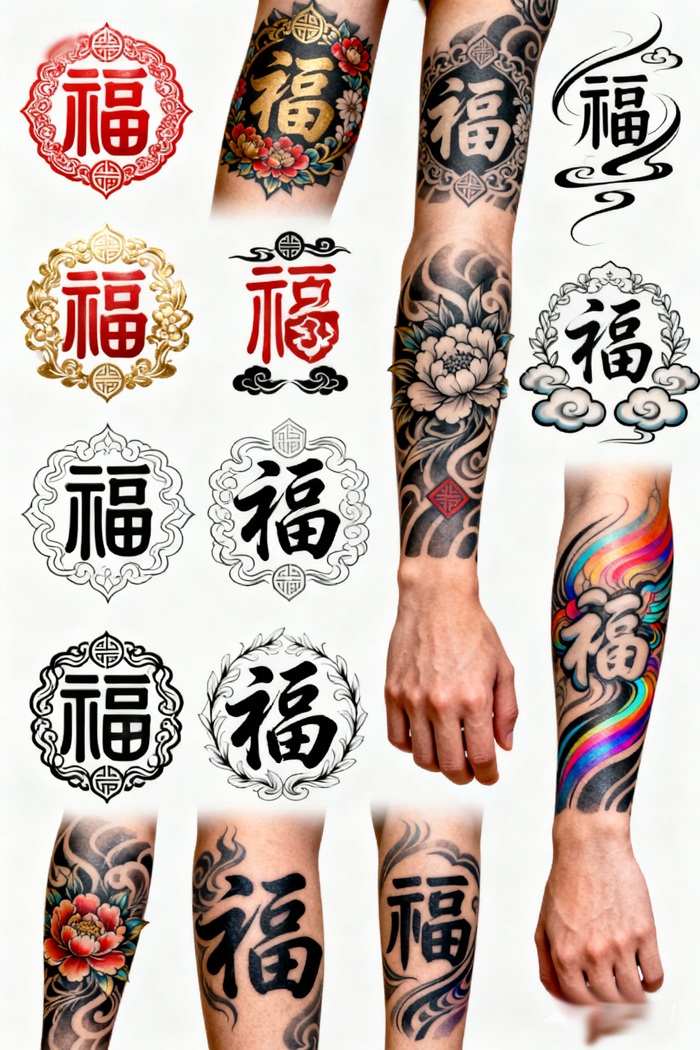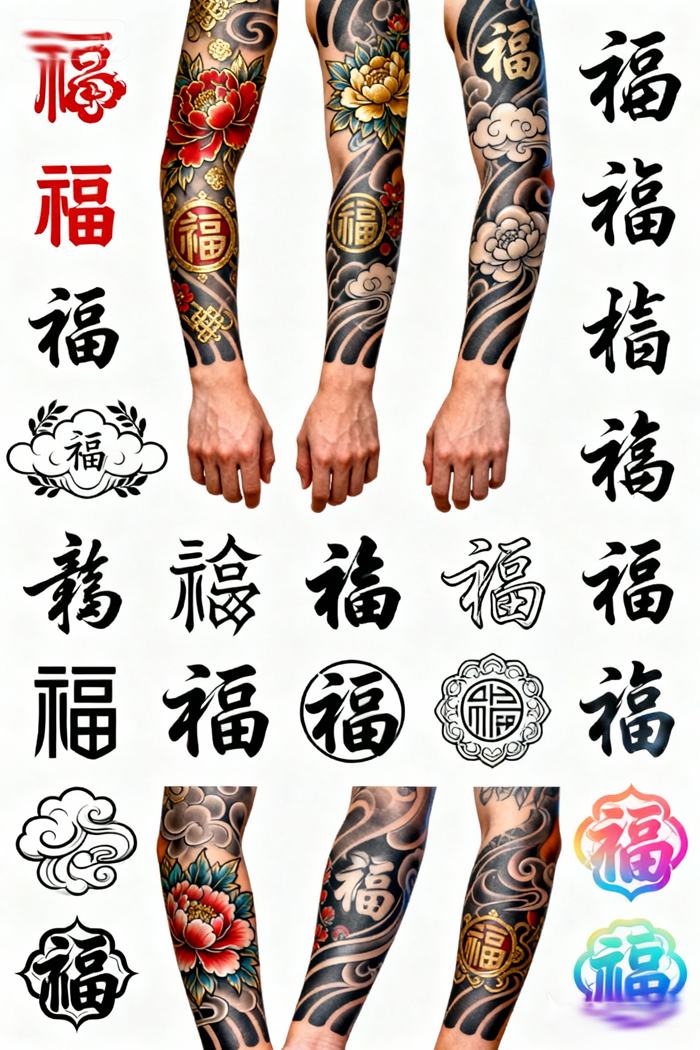The Fu Symbol: A Complete Guide to the Chinese Character for Luck and Blessings
The Chinese character Fu (福), pronounced as "fú" in the second tone, is arguably the most iconic and culturally significant symbol of good fortune in the Chinese-speaking world. More than just a word, it is a vessel carrying millennia of tradition, philosophical thought, and collective hope. If you've ever wondered about the fu meaning, or seen the distinctive upside down fu symbol during Lunar New Year celebrations, you have encountered a cornerstone of Chinese culture. This comprehensive guide delves deep into the fu chinese meaning, exploring its history, its artistic expressions, and its enduring relevance from ancient rituals to modern body art.
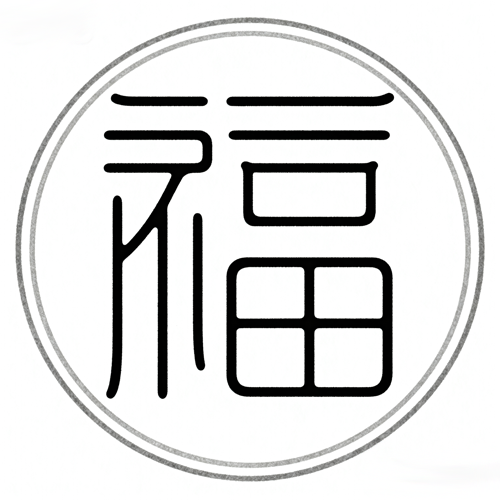
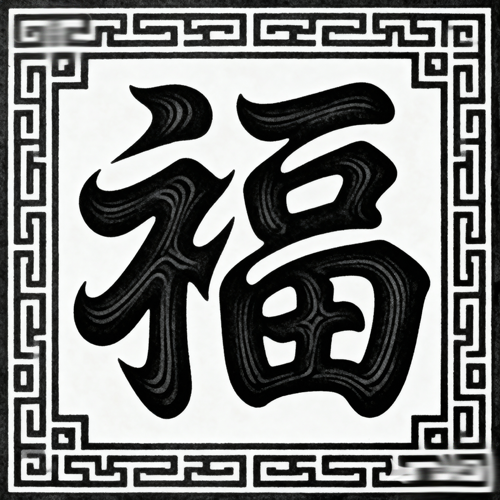
Part 1: The Essence of Blessings - Unpacking the Fu Meaning
At its core, the chinese character fu represents a cluster of the most positive concepts in human experience. So, what does fu mean in chinese? Its primary translations are:
Good Fortune
Blessings
Happiness
Prosperity
It is the ultimate chinese symbol for luck, but its meaning is more profound than mere chance. Fu implies a state of being blessed, a life filled with well-being, success, and familial harmony. It is the answer to the question, "what does fu mean in chinese?" that encompasses all that is auspicious and desirable.
The character's etymology provides a fascinating glimpse into its original intent. The modern form of 福 (fú) is a phono-semantic compound, consisting of two key parts:
The Radical (示 - shì): On the left side, this radical is a simplified form of the character 示, which originally depicted an altar. This component directly ties the character to spirituality, worship, and the divine. It signifies that blessings and good fortune were historically seen as gifts from the gods or ancestors, received through prayer and ritual at an altar.
The Phonetic Component (畐 - fú): On the right side, this element provides a clue to the character's pronunciation. However, it also contributes to its meaning. 畐 itself is an ancient character depicting a full wine vessel. In an agrarian society, an abundance of food and drink—a full vessel—was the very definition of prosperity and a well-provided life.
Therefore, the fundamental fu chinese meaning is beautifully encapsulated in its structure: "the blessings (示) of abundance (畐) received from the divine." It is a character that speaks to both spiritual fulfillment and material well-being, making it a holistic chinese lucky symbol.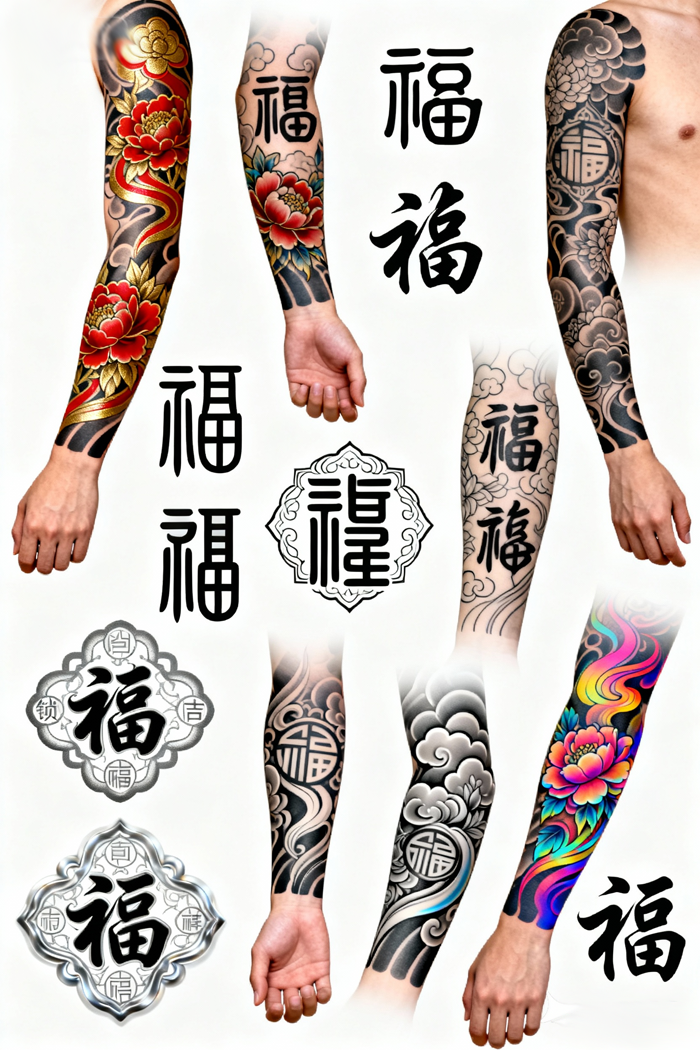
Part 2: The Auspicious Inversion - The Story of the Upside Down Fu
No discussion of the fu symbol is complete without explaining its most famous tradition: hanging it upside down. The upside down fu symbol is a ubiquitous sight during the Lunar New Year, adorning doors, windows, and walls. The reason behind the fu symbol upside down is one of the most beloved puns in the Chinese language.
The logic is beautifully simple:
The verb "to invert" or "to pour out" is 倒 (dào).
The verb "to arrive" is 到 (dào).
These two words are perfect homophones. Therefore, when you 倒 (dào) the 福 (fú) character, it symbolizes the 到 (dào) of good fortune. An upside down fu is a visual and linguistic pun meaning "blessings have arrived" or "good fortune is pouring into this home."
This tradition perfectly answers the common query, "why is fu upside down?" It transforms a static symbol into an active invocation. It’s not just a wish for future luck; it’s a declaration that luck is manifesting right now. This custom turns the home itself into a vessel ready to receive the abundance that the chinese new year fu symbolizes.
Part 3: Fu Through the Seasons - Rituals and Modern Applications
The chinese new year fu is the character's most prominent annual showcase. In the days leading up to the Spring Festival, families clean their homes to sweep away bad luck and decorate with red paper cut-outs, couplets, and the fu character. The act of pasting the upside down fu symbol on the main door is a key ritual, often performed by the head of the household while the family says aloud, "福到了! (Fú dào le!)" — "Blessings have arrived!"
However, the fu symbol is not confined to the New Year. Its role as a primary chinese symbol for luck ensures its presence in various aspects of life:
Architecture: It is carved into woodwork and stone in traditional homes and temples.
Art and Decoration: Ceramics, paintings, and tapestries often feature the character.
Ceremonies: It is incorporated into weddings and birthday celebrations to bless the participants with a fortunate future.
Commerce: Businesses display it to attract prosperity and success.
Part 4: The Art of Blessings - Fu in Calligraphy and Digital Design
The aesthetic expression of the fu character is an art form in itself. Fu calligraphy is a highly practiced discipline, especially during the New Year. Master calligraphers are sought after to write the character with brush and ink on red paper, their individual styles imbuing the symbol with unique energy—from powerful, bold strokes conveying strength to graceful, flowing lines suggesting ease and abundance.
In the digital realm, the demand for the fu symbol has translated into a need for versatile graphic files. Designers and content creators globally search for a fu symbol vector (a scalable graphic that doesn't lose quality) for use in logos, promotional materials for Lunar New Year, and product designs. Similarly, the search for a fu symbol png (a digital image with a transparent background) is extremely common, as it allows people to easily overlay the symbol onto websites, social media posts, and digital greetings. This modern application ensures that the ancient chinese character fu remains a vibrant and relevant part of global visual culture.
Part 5: A Permanent Blessing - The Fu Tattoo
The desire to carry the essence of this symbol has made the fu tattoo a mainstay in the world of body art. As a chinese symbol for luck tattoo, it is a popular choice for people of all backgrounds who wish to permanently ink a talisman of good fortune onto their skin. A chinese fu tattoo can represent a hope for a blessed future, a reminder of one's cultural heritage, or simply an appreciation for the character's elegant form.
When considering a fu tattoo, it is paramount to:
Understand the Meaning: Ensure you fully connect with the fu chinese meaning of blessings and good fortune.
Choose the Style: Decide between a standard script, a traditional seal script for an ancient look, or a custom calligraphic style.
Select a Skilled Artist: Choose a tattoo artist with proven experience in rendering Chinese characters accurately and artistically. A poorly executed character can be visually unappealing and, in rare cases, incorrect.
A well-designed fu tattoo is more than decoration; it is a personal and powerful statement of one's intentions and hopes.
Part 6: How to Pronounce Fu and Use It Correctly
A crucial step in understanding and using this symbol is knowing how to pronounce fu correctly. The chinese character fu is pronounced as fú.
The Initial: "f" as in "food".
The Final: "u" similar to the "oo" in "food".
The Tone: The Second (Rising) Tone. This is essential. The tone must rise, as if you are asking a question. Mispronouncing it can lead to confusion with other words.
Knowing that fu in chinese is pronounced fú allows you to confidently discuss the symbol, ask about the upside down fu tradition, and correctly wish someone well.
Conclusion: The Eternal Symbol of a Blessed Life
From its ancient origins at the spiritual altar to its modern manifestations in digital PNGs and permanent tattoos, the fu symbol has traversed time without losing its power. It is a masterclass in the depth of the Chinese language, where a single character can contain a world of meaning, history, and hope. The tradition of the upside down fu symbol showcases the cultural love for witty wordplay and active optimism.
Whether you encounter it as a chinese new year fu decoration, admire it in a piece of fu calligraphy, use a fu symbol vector in a design, or wear it as a chinese fu tattoo, you are engaging with a symbol that has, for centuries, answered the human desire for a simple, powerful truth: a life of good fortune, happiness, and abundance. The fu character is not just a wish for these things; it is a timeless invitation for them to arrive.
